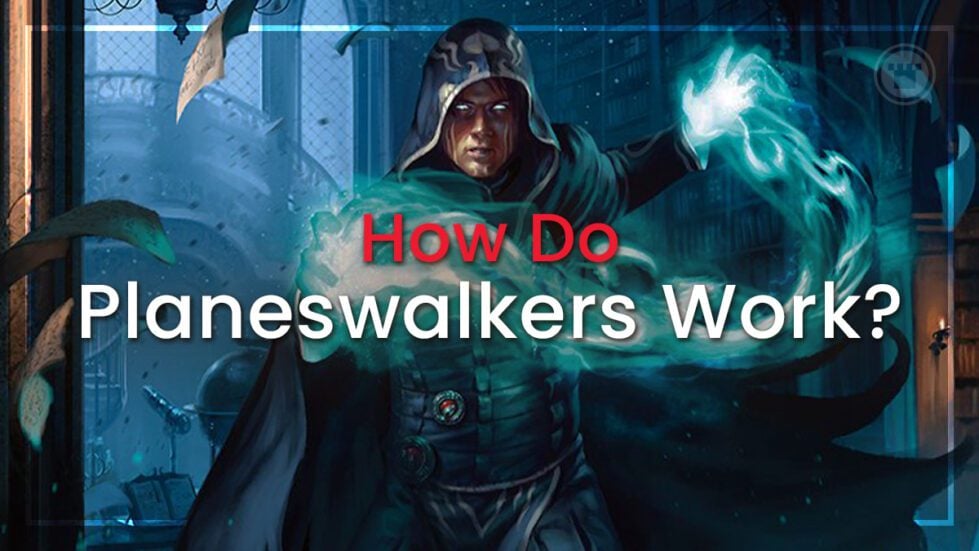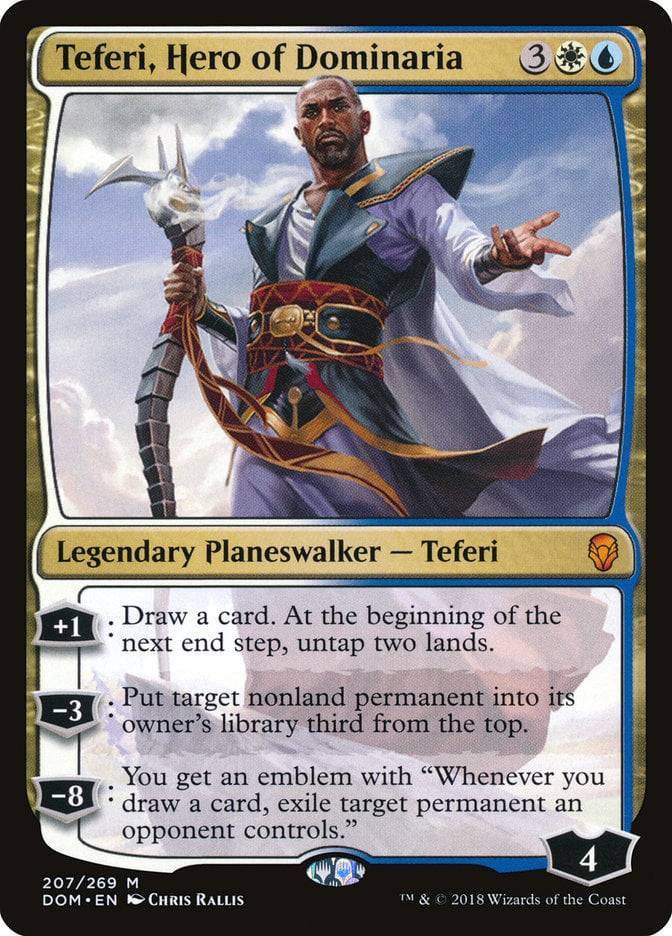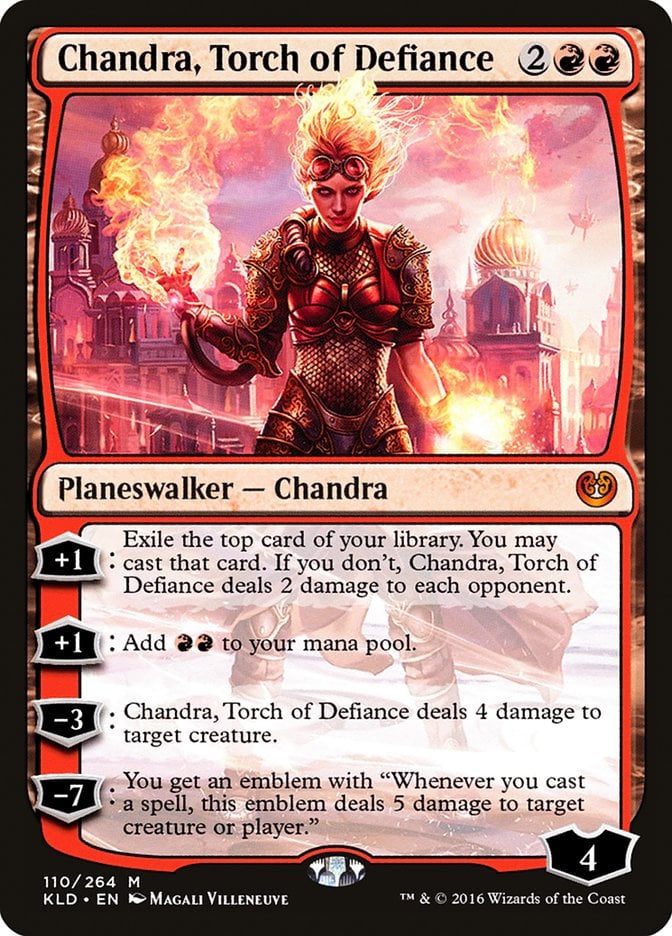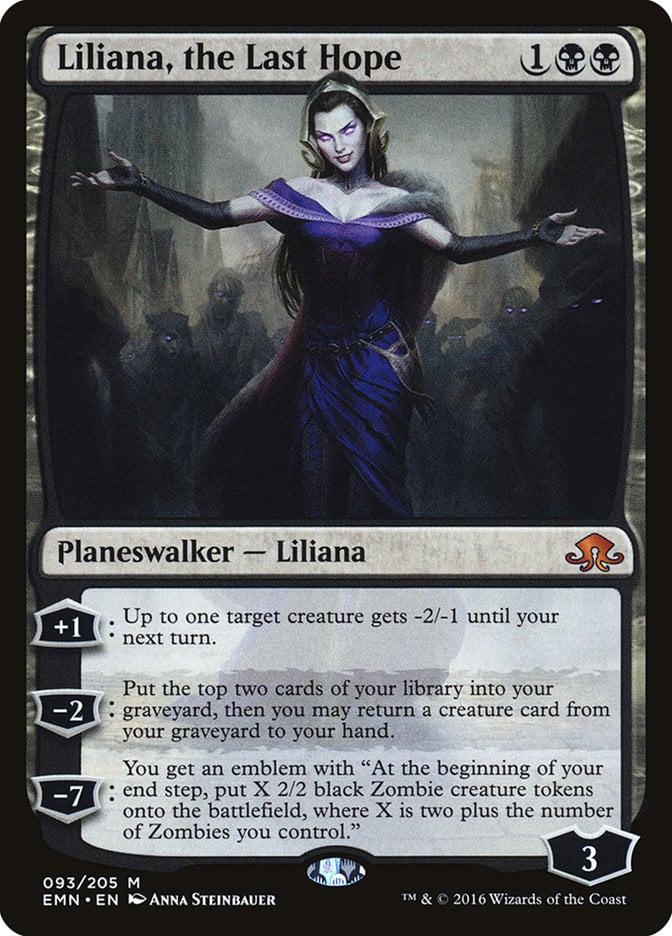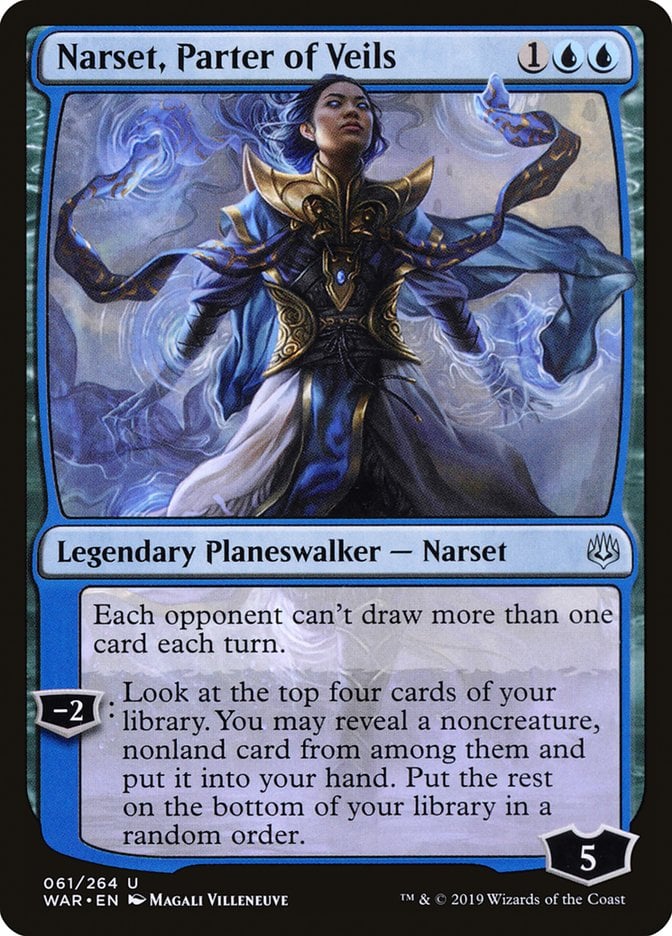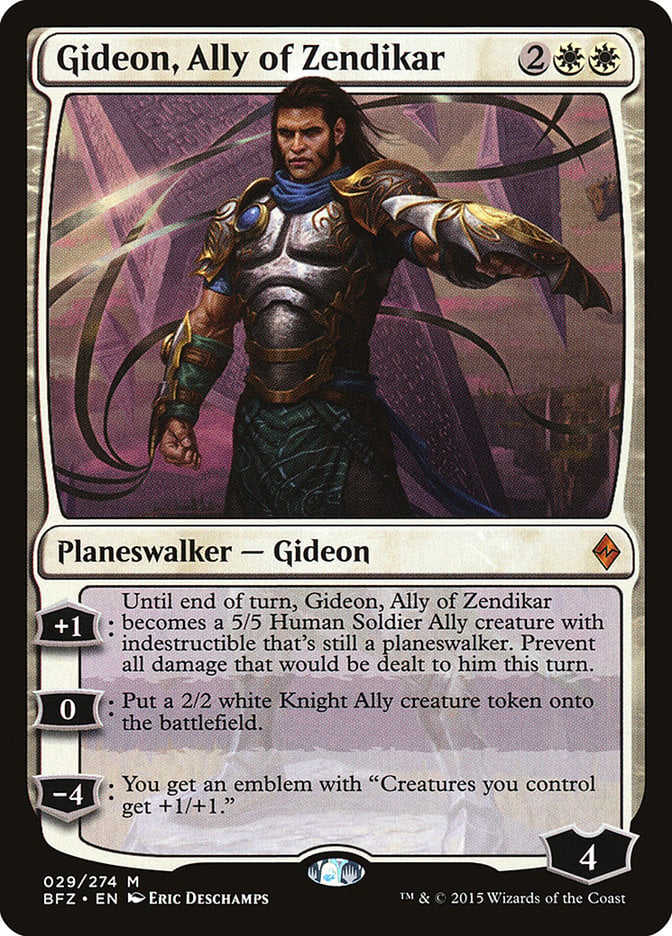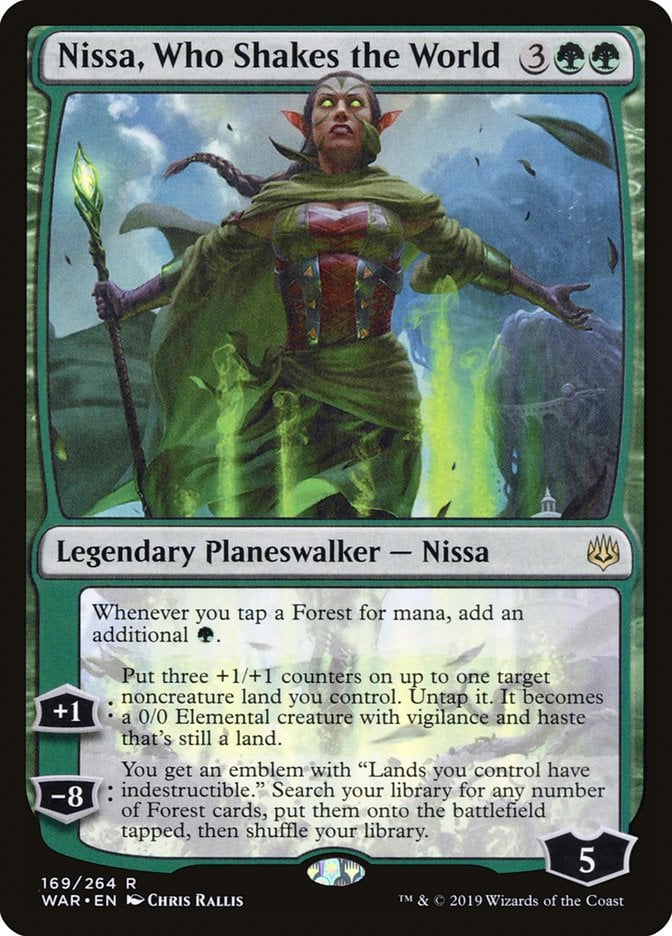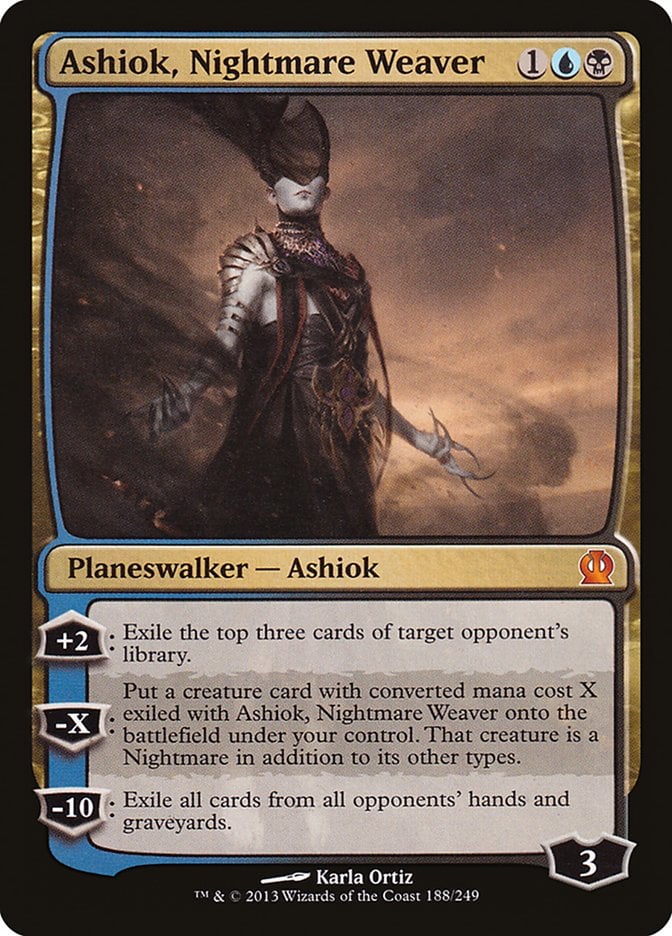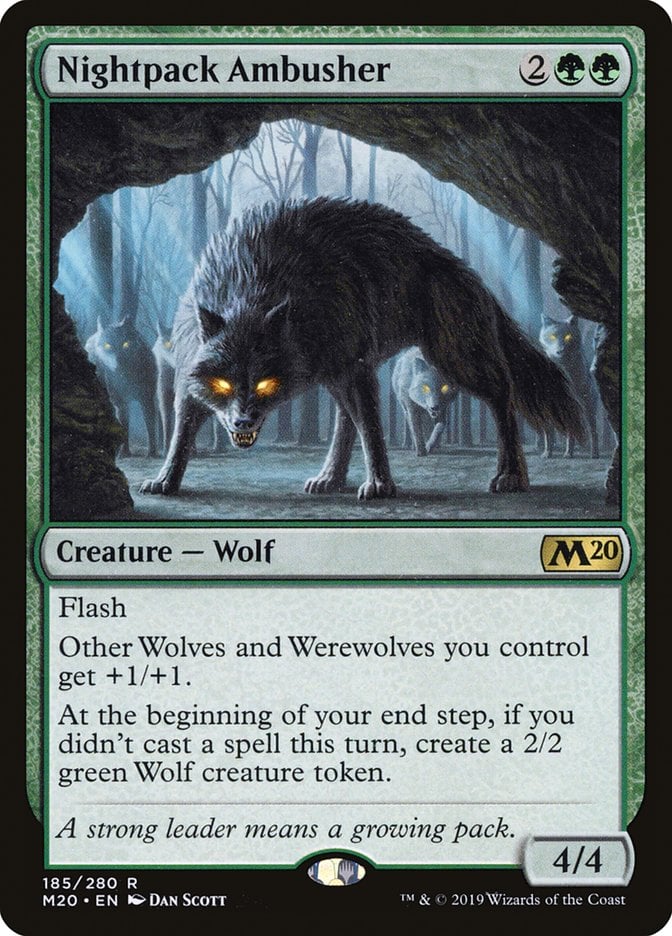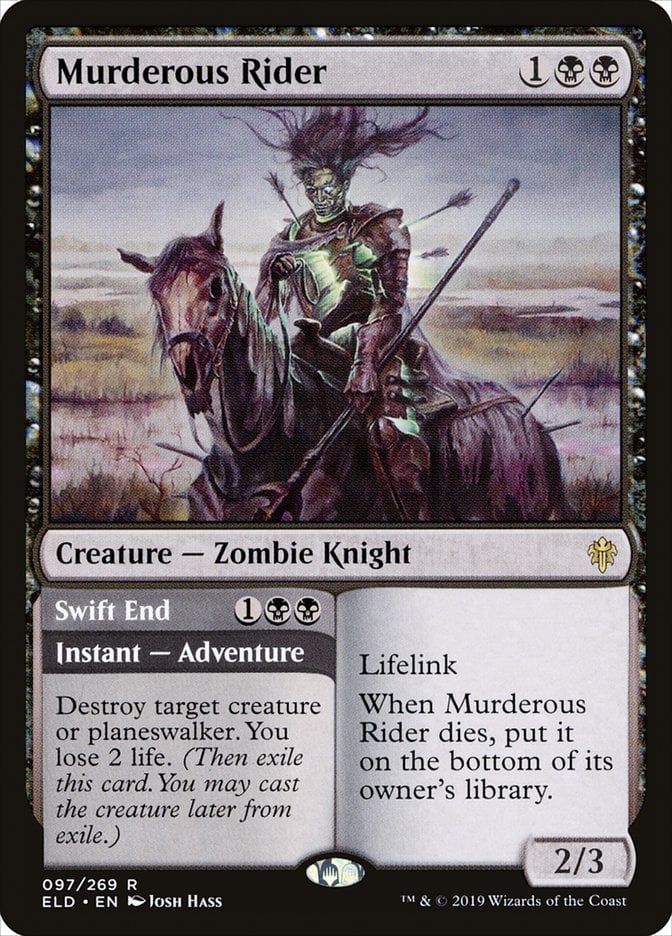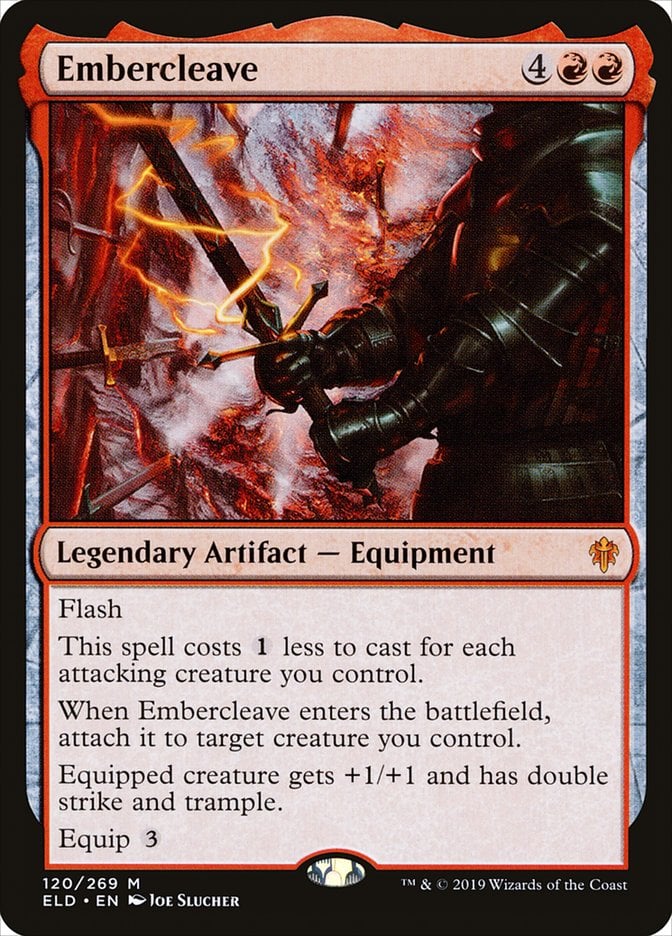Jace, the Mind Sculptor. Liliana of the Veil. Oko, Thief of Crowns.
Planeswalkers are some of the most powerful and recognizable cards in Magic: The Gathering history. They function differently than other types of Magic cards and essentially serve as additional players in the game.
But the same qualities that make Planeswalkers so successful in the hands of experienced players sometimes make them inscrutable to new ones. If you’re new to Magic and are still trying to understand the Planeswalker card type, we’re here to help!
All About Loyalty
Planeswalkers are character cards with abilities that can assist you in a game. Instead of a starting life total, Planeswalkers come with what’s called a starting loyalty. Your Planeswalker’s starting loyalty is in the text box in the bottom right corner of the card; in Teferi’s case, it’s 4.
Loyalty is a type of counter in Magic, and it functions like a player’s life total or a creature’s toughness. Planeswalkers can gain and lose loyalty counters throughout the game, and when their loyalty is reduced to zero, they die and go to their owner’s graveyard.
Planeswalkers can gain and lose loyalty in a few ways:
Loyalty abilities
You can add and remove loyalty counters from Planeswalkers by activating the loyalty abilities listed on the card. Activating either of Chandra’s first two abilities will add one loyalty to her loyalty total, but you’ll need to spend loyalty to activate her third and fourth abilities. Generally, the more powerful a Planeswalker ability is, the more loyalty it costs.
You may activate one loyalty ability per Planeswalker per turn any time you could cast a sorcery, including during the turn you resolve a Planeswalker card. (If you have several Planeswalkers in play, you may activate one ability on each.) Most Planeswalker cards have three loyalty abilities, but some have as few as two or as many as four, so you may have some options on each turn.
Damage
Planeswalkers take damage just like creatures and players do, and they lose loyalty equal to the amount of damage they take. Damage can be dealt to Planeswalkers in two ways:
- Attacking with creatures: A player can choose to attack a Planeswalker with their creatures instead of attacking another player. The defending player can prevent damage to their Planeswalkers the same way they’d prevent attacking creatures from dealing damage to them: by blocking the attack with their creatures or by using an instant-speed spell to remove the attacking creatures. Any unblocked creatures will deal damage to the Planeswalker they’re attacking.
- Spells that deal damage: Some spells that deal direct damage can target Planeswalkers.
Effects that add or remove counters
Loyalty counters can be added or removed just like any other counters in Magic. For example, the proliferate ability, which increases the number of counters on permanents, applies to loyalty counters.
Static Abilities
For the first twelve years of their existence, Planeswalker cards only had loyalty abilities that players could activate one at a time. However, with the release of War of the Spark in 2019, Wizards of the Coast designed Planeswalkers with static abilities.
Static abilities are conditions that are always true as long as the card with the ability remains in play. So, for example, as long as Narset, Parter of Veils is on the battlefield, each opponent of the player who controls Narset can’t draw more than one card per turn. If you want to draw more cards, you’ll have to find a way to remove Narset from the battlefield.
Ruling Out the Legends
Planeswalkers are extremely powerful, but they do have their limitations. One of these limitations is known as the legend rule.
The legend rule states that, if you control two or more copies of a legendary card with a given name, you must choose one to keep on the battlefield and sacrifice the rest. (A legendary card is any card whose name is a proper noun; this includes Planeswalkers and other named characters in Magic’s story.) That means you can’t have two copies of Gideon, Ally of Zendikar on the battlefield at the same time. However, two different Planeswalker cards depicting the same character are totally okay – you can have both Gideon, Ally of Zendikar and Gideon of the Trials on your side of the battlefield. Additionally, you’re allowed to control a Planeswalker card with the same name as a Planeswalker card that your opponent has in play – in fact, it’s common in many Magic formats to see two copies of the same Planeswalker staring each other down!
What Makes Planeswalkers Good?
Now that we’ve covered how to play with Planeswalker cards, you’re probably eager to add them to your decks. There are tons of Planeswalker cards to choose from, and you might be asking yourself which ones are the strongest and why.
Here are a few questions you should ask yourself when evaluating Planeswalker cards:
Does the Planeswalker protect itself?
Planeswalker cards have powerful effects, but they are vulnerable to attacks from creatures. Therefore, the Planeswalker cards that best protect themselves from attacks tend to be the strongest. Planeswalkers can protect themselves in several ways: by removing opposing creatures, by generating creature tokens that can serve as blockers, or by having a high starting loyalty that will allow them to survive an attack.
How useful are the Planeswalker’s abilities in context?
All Planeswalker abilities will help you, but some are more helpful than others. Consider how strong your Planeswalker card is against the decks you expect to play against, as well as how useful it’ll be if you only get to use one of its abilities before it’s removed.
Does the Planeswalker suit your game plan?
While many Planeswalkers have generally powerful abilities, others are much more niche. If your have your sights set on a Planeswalker card with a relatively narrow ability set, you’ll want to build a deck that can adequately support it.
Dealing with Planeswalkers
Maybe you haven’t managed to get your hands on a Planeswalker card yet, but you regularly face them on MTG Arena or in your playgroup. When you’re just starting out, you may feel unprepared to deal with your opponents’ strongest cards, and Planeswalkers tend to require very specific answers.
The good news is that players of every play style have the tools to deal with Planeswalkers. Here are four strategies we suggest.
Attack Them
Remember, Planeswalkers will lose all their loyalty if they take enough damage from creatures. If you enjoy playing aggressive creature-based decks, this is probably the best strategy for you.
However, it can be tough to decide when it’s best to attack a Planeswalker and when to attack their controller instead. We’ve written a separate article on that, which you can read here.
Use Removal
Many removal spells in Magic can target Planeswalkers – and not just the direct damage spells we mentioned earlier! Some instant-speed spells, like the Swift End half of Murderous Rider, can destroy creatures or Planeswalkers. Any removal spell that can target any permanent can target a Planeswalker as well.
Use Counterspells
In some situations, it can feel futile to use a removal spell on a Planeswalker after your opponent has already benefitted from its abilities. Fortunately, you can prevent Planeswalkers from entering the battlefield with counterspells. Spells like Negate or Dovin’s Veto that counter noncreature spells can target Planeswalkers.
Ignore Them
Ignoring your opponent’s strongest card might be unintuitive, and in many cases, it might be the wrong move. But sometimes, you’ll be rewarded for focusing on reducing your opponent’s life total or milling their whole library instead. After all, your opponent can’t activate their Planeswalkers if they’ve already lost the game!
Start Planeswalking
Planeswalkers are incredibly useful cards to have in your decks and in your Magic collection. You can browse all the Planeswalker cards on CardKingdom.com here, and check out more new player resources here on our blog.
Are you new to Magic and want more content teaching you about the game? Sign-up for our emails and we’ll make sure you’re in the know about new content!

Hallie served as Content Manager for CardKingdom.com and editor-in-chief of the Card Kingdom Blog from 2017-2022. Part tournament grinder, part content creator, Hallie is always looking for ways to improve her game and to share what she learns with others.

